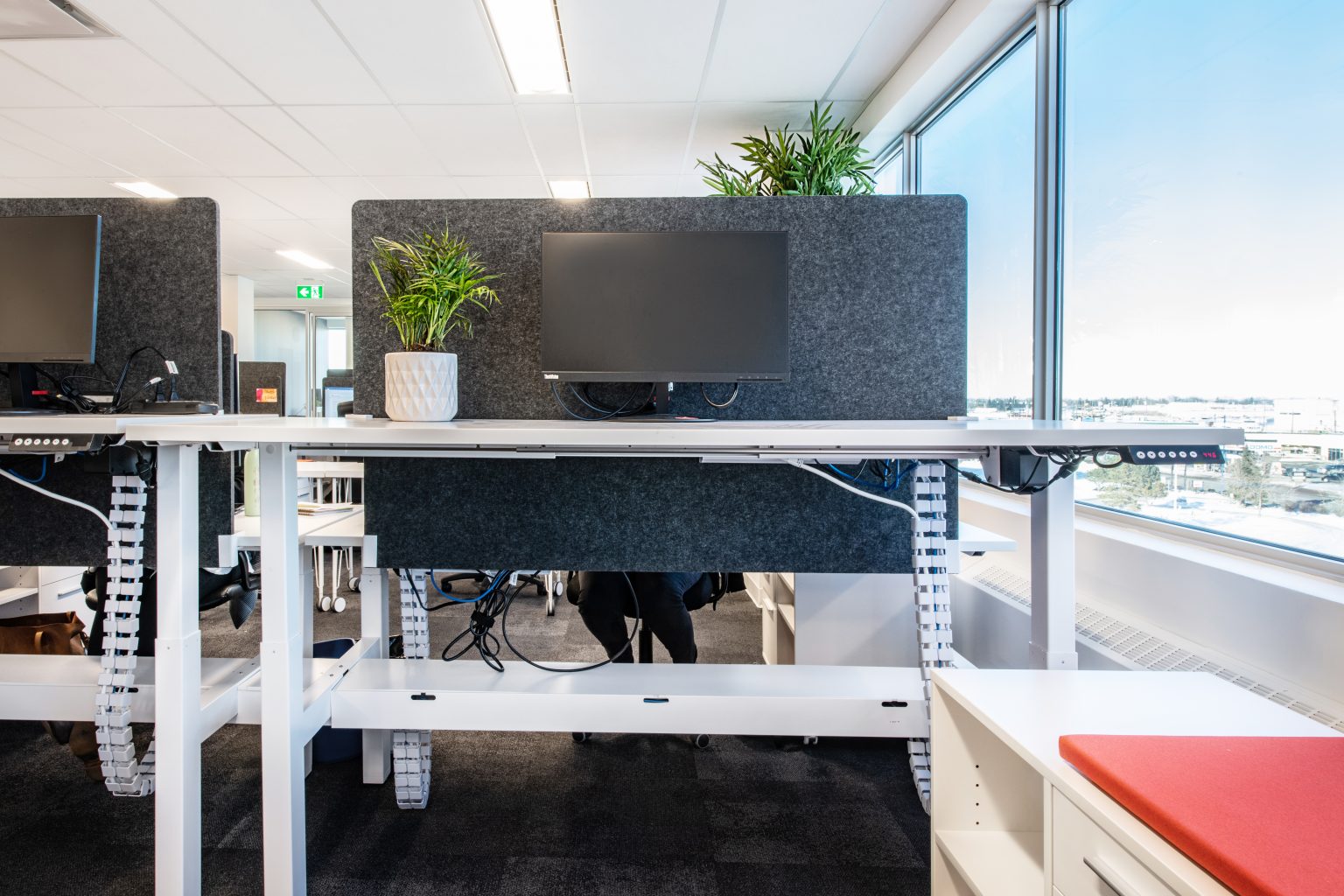Technology & The Agile Workplace: Driving Change
August 18, 2021

Two major drivers are changing the ways that we work in the 21st century:
Technological advancements and the shift towards the Agile Workplace.
The Impact of Technological Growth on Space Allocation
As technology continues to evolve, organizations look to develop and deliver workspaces that are aligned with the new ways we work. Sterile cubicles and inefficiently designed offices are making way for inviting workspaces that allow for collaboration and flexibility.
Modern workstations need less dedicated space for large computer equipment and file storage thanks to advancements in technology. This means that available space can be reallocated to common areas for collaboration or lounging. The result is a combination of individual workspaces designed with efficiency in mind, complemented with spacious common areas that benefit all team members including breakout rooms, café spaces, and in-between spaces. The modern office provides opportunities for ideas to organically flow and allows for the adoption of the Agile Workplace.
The Agile Workplace – The Latest Workplace Innovation
The Agile Workplace is a paradigm shift that allows for organizations to optimize the use of available space. A key principle of the Agile Workplace is the adoption of a non-assigned seating model, where staff members work from unassigned shared spaces instead of individualized workstations. Moving to flexible shared spaces accommodates more people in fewer square feet and reduces the number of unoccupied workstations from staff being out-of-office.
As outlined by US-based workplace strategist Ian Morley, “many companies take the idea of agile workplaces to the next level by moving to Activity Based Working (ABW) at the same time they implement Agile Workspaces.” Morley further states that “ABW gives team members the freedom to choose the type of space they want to work in based upon the type of work they need to do that day.”
Available spaces can include unassigned workstations, collaboration rooms, or café-style spaces featuring designs inspired by hospitality or residential furniture. While new to the workplace, ABW may be familiar to many, as colleges and universities across North America have adopted a model that parallels ABW for decades when providing spaces for students to work, study, and collaborate.
Case Studies: Incorporating New Technology with Agile Working
The shift towards the Agile Workplace and ABW is a major cultural change. The incorporation of the latest technologies can help employees navigate the new environment and enhance the overall Agile Workplace and ABW experience. Two notable organizations that have successfully transitioned to an Agile Workplace with the help of technology include:
- Cisco (Toronto Office): uses technology to provide employees with optimal flexibility, real-time communication, and workplace customizability.
- CBRE (Los Angeles Office): shifted to the Agile Workplace to demonstrate leadership in changing the workplace to be consistent with the way we work in the 21st century.
Are you interested in learning how CDI Spaces can create unique workspaces that can adapt to your changing needs, accelerate your success, and incorporate the latest ideas in workplace design? Let’s have a brainstorming session to Discover what you want to accomplish for your spaces and how to best prepare your workspaces for future growth and flexibility.


